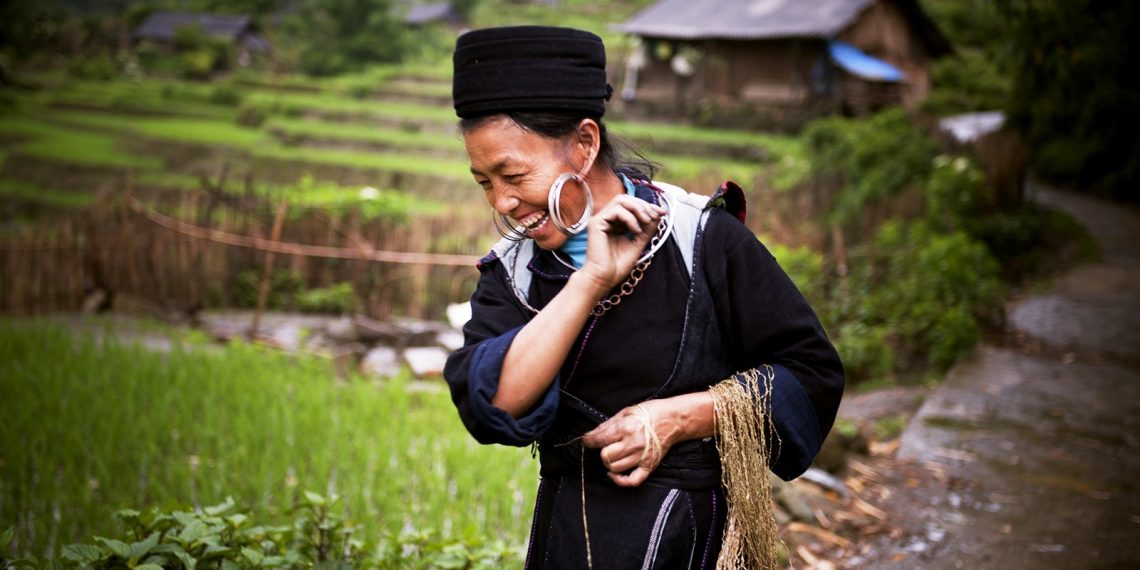“We don’t hate everything,” said Tarcila Rivera Zea, a Quechuan activist from Ayacucho, Peru, who has fought for the rights of indigenous peoples for more than 30 years. She was talking about the irony of building renewable energy projects on indigenous lands but not for indigenous communities.
Indigenous communities around the world have been fighting a complicated climate battle. Many of them live on lands targeted for renewable energy projects. Although renewable energy is an important solution to climate change, it can also cause harm — particularly when companies grab tribal lands and governments criminalize indigenous activists who oppose new energy projects.
Victoria Tauli-Corpuz, the United Nations’ special rapporteur on the rights of indigenous peoples and an outspoken member of the Kankanaey Igorot people of the Philippines, often talks about the death of Honduran indigenous activist Berta Cáceres, who was killed in 2016 while mounting a campaign against a large hydroelectric dam – which would compromise the local community’s access to water.
“Renewable energy development should also be guided by a human rights-based approach,” added Joan Carling, a member of the Indigenous Peoples Major Group for the Sustainable Development Goals, a coalition which ensures that the voices and rights of indigenous communities are heard and included in the world’s quest to achieve a more equal and sustainable planet.
“Indigenous peoples are fully supportive of the transition from fossil fuel to renewable energy but at the same time when we do the transition to renewable energy, we also need to include indigenous peoples in the decision-making on what type of renewable energy is appropriate in indigenous territories and in accordance to their culture and integrity as people.”
Tarcila Rivera Zea and Carling recently attended the UN High-level Political Forum – the largest annual gathering to take stock of progress on the Sustainable Development Goals. Representing indigenous communities everywhere, their message was loud and clear – indigenous peoples, who are on the frontlines of climate change, bear the brunt of both the impact and solutions to the most defining challenge of our time.
Surviving Fragile Eco-systems

They have the least carbon footprint but are very vulnerable to the impact of climate change, living in geographically high-risk areas – including nomadic pastoralists living along desert margins, horticulturalists and fisherfolk in small and low-lying islands, farmers in high-altitudinal zones, and hunters and herders across the circumpolar Arctic.
These communities, however, are also key sources of knowledge and understanding on climate change impacts, responses and adaptation. Their traditional knowledge, focused on sustainability and resilience, – from forecasting weather patterns to improving agricultural practices and management of natural resources – has increasingly gained recognition at the international level as a vital way forward to tackle climate change.
Indigenous peoples have a reciprocal relationship with Mother Nature, explained Tarcila Rivera Zea, talking about how her elders in the 1980s were mindful of the resources they used. “We used only what we needed for food or for life because we respect Mother Nature.”
Charting a Way Forward with Traditional Knowledge
“They [Indigenous peoples] are action makers, innovators, through their traditional knowledge,” said Hindou Oumarou Ibrahim, who was appointed an SDG Advocate by UN Secretary-General António Guterres earlier this year. She is an expert on indigenous peoples’ adaptation to climate change and traditional ecological knowledge.
“For centuries, indigenous peoples have protected the environment, which provides them food, medicine and so much more. Now it’s time to protect and benefit from their unique traditional knowledge to bring concrete and natural solutions to implement the Sustainable Development Goals and fight climate change.”
Traditional knowledge, a product of learning through experience and oral traditions passed over centuries, has been developed over generations through daily life practices and a close understanding of local environments. Experts say that it offers tremendous opportunities in areas such as land management, conservation, and scientific, technological and medical research.
While the risks faced are manifold, indigenous peoples are increasingly coming to be recognized as agents of change in achieving strong and meaningful climate action.
Most recently, the Intergovernmental Panel on Climate Change recognized indigenous peoples as a key partner, noting that, “strengthening the capacities for climate action of national and sub-national authorities, civil society, the private sector, indigenous peoples and local communities can support the implementation of ambitious actions implied by limiting global warming to 1.5°C.”
“The issue of climate action from our perspective as indigenous peoples, who are already contributing solutions to climate change – we need to have our rights recognized so [that] the contributions we are making can also be sustained,” said Rivera Zea.



